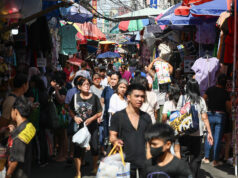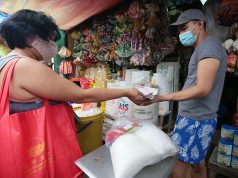Philippine tourism faces bleak 2021 amid virus
THE OUTLOOK for tourism next year remains bleak, with the Philippines struggling to contain a coronavirus pandemic and travelers awaiting the development of a vaccine, according to the Institute of International Finance (IIF), a global financial industry association.
“We see the Philippines’ tourism revenue inflows declining by 2.1% of GDP this year, as the government of the Philippines is still struggling to control the pandemic. The country has one of the most infections and most stringent lockdowns in the region,” Yuanliu Hu, an economist at Washington, DC-based IIF, said in an e-mail last week.
Tourism was among the hardest-hit sectors during the coronavirus pandemic due to travel bans and quarantines to slow the spread of the virus.
The sector accounted for 12.7% of Philippine gross domestic product (GDP) in 2019, according to the Philippine Statistics Authority. Spending by domestic tourists was P3.14 trillion last year while foreign travelers spent P548.76 billion.
Next year, Mr. Hu said weak travel demand is likely to continue as a recovery will depend on the availability of a vaccine against the coronavirus disease 2019 (COVID-19).
Research, tests and trials for the COVID-19 vaccine are still ongoing in various countries with no clarity on when they will be broadly available.
“We remain pessimistic about the outlook for the Philippines tourism sector in 2021. The weak travel demand is expected to persist for some time, possibly until a vaccine becomes available. Tourism receipts are unlikely to pick up anytime soon,” he said.
The Philippine government has said it plans to start buying COVID-19 vaccines in the first quarter of next year and begin mass vaccination by May.
In a note last week, the IIF said the lack of tourism inflows would have a significant impact on the balance of payments (BoP) in the most-affected countries as it dampens the balance of services.
It said overall, “pressure on reserves will be significant.”
The BoP was in surplus by $6.88 billion in the nine months to September, up 24% from a year earlier.
Mr. Hu said setbacks to the reserve levels will be mitigated by an expected pick up in goods balances due to lower goods imports, better-than-expected remittances, and a strong peso.
Merchandise imports fell 16.5% to $7.92 billion in September, bringing the nine-month tally to $61.95 billion, down 26% year on year.
The peso closed at P48.22 against the dollar on Friday.
Remittances dropped further in August by 4.1% to $2.483 billion, according to the central bank. Year to date, remittance inflows declined 4.2% to $21.414 billion.
The World Bank estimated that remittances by overseas Filipino workers will drop by 5% this year as more workers are expected to return after losing their jobs. — Beatrice M. Laforga



